







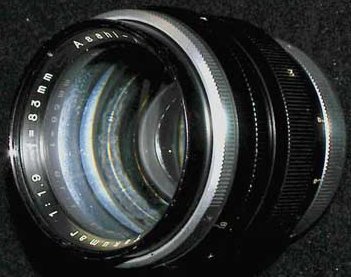


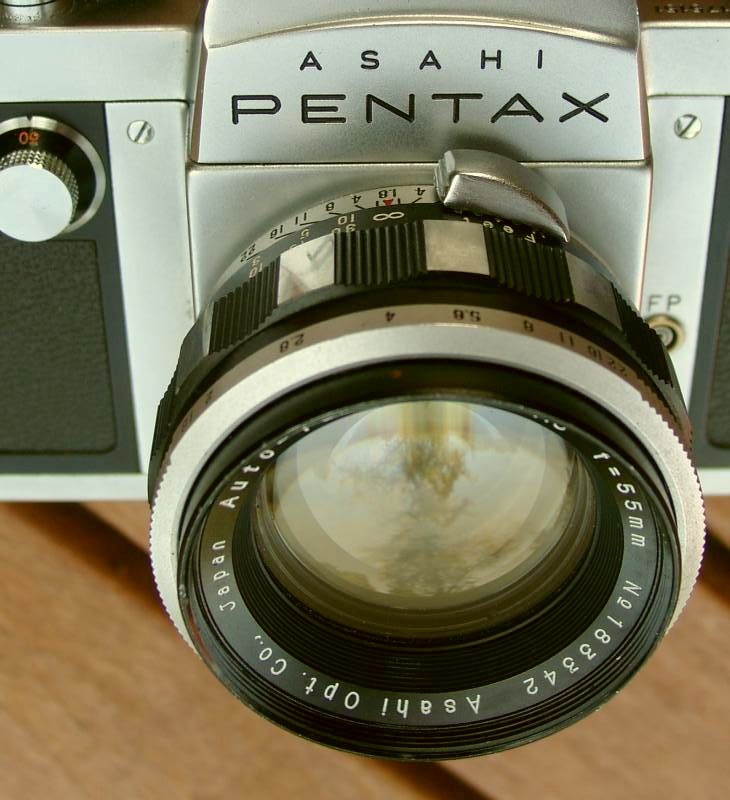
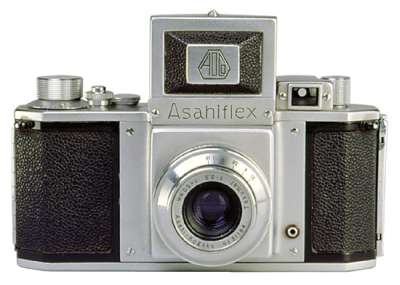
| Type |
Asahi
Kogaku Takumar |
Asahi
Kogaku Takumar |
Asahi
Kogaku Takumar |
Asahi
Kogaku Takumar |
Asahi
Kogaku Takumar |
| Lens |
50mm
f/3.5 |
58mm
f/2.4 |
83mm
f/1.9 |
100mm
f/3.5 |
135mm
f/3.5 |
| Minimum
Aperture
(Diaphr. type) |
16 (P) |
16 (P) |
16 (P) |
16 (P) |
16 (P) |
| Groups-Elements |
3-4 |
3-5 |
4-7 |
3-3 |
4-5 |
| Minimum Focussing Distance (m) |
0.7 |
0.6 |
1.1 |
1.4 |
1.8 |
| Weight (g) |
180 |
200 |
350 |
280 |
500 |
| Filter Siez (mm) |
32 |
40 |
49 |
34 |
43 |
| Introduced |
1952 |
1954 |
1953 |
1952 |
1953 |
| Lens Diagram |
 |
 |
 |
 |
 |
| Picture |
 |
 |
  |
 |
 |
| Press Text |
Standard
lens
of Tessar type, especially corrected against astigmatism and
chromatic aberration. Most suitable for close-ups and reproduction
because of the wide angle vision, as well as for scenery, persons,
snaps, etc. |
Sensational
standard
lens of f/2.4 ever produced with 5 lens elements. The focal
length is designed at 58mm for single lens reflex camera, having
excellent resolving power. Especially designed for color photography
because of the increasing popularity of color pictures (Instruction
Asahiflex II) |
Unique
among
the TAKUMAR lenses. Along with the TAKUMAR 135mm telephoto lens,
aberrations arc reduced in the ultimate value shown by wave optics.
Especially the spherical aberration is smaller than any lens made in
Japan. Most .suitable for portraits, night photography, stage pictures
as well as for general photographs. |
Although
composed
of 3 elements,
aberrations are satisfactorily corrected. Recommended for taking
sceneries, portraits, news pictures, etc. |
Aberrations
reduced
tu the ultimate value along with the TAKUMAR 83 mm lens. Even
with the diaphragm full open, the resolving power is excellent,
prodicing brilliant brightness to every corner of the picture.
Indispensable for long distance or portraits. Capable of close-ups of
animals or plants at a distance. |
| Remarks |
This
is
a common, solid Tessar type (like the Leitz Elmar of that vintage) |
A
somewhat
uncommon lens of the Heliar type with a cemented front
element. No 35mm SLR or Rangefinder of that era had such a lens. The
fastest Heliar type standard lens which I know |
A
up-to-date
fast telephoto with second group consisting of 3 cemented
elements, which
categorizes it to the "Sonnar" design family. Different from
other Sonnars is the splitted rear group. |
A
common
triplet design like the pre-war Zeiss Triotar |
A
very
fine 5-elements design
higher effort than common in that focal length at that time. Pentax
kept this layout (1-1-1--2) in telephoto designs until recent years |
| Occurence |
3 *** |
49 * |
7 *** |
11 *** |
8 *** |
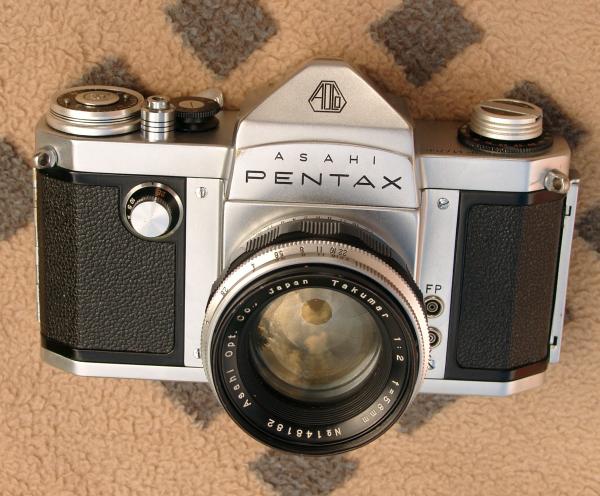
| Type |
Takumar |
Takumar |
Takumar |
Takumar |
| Lens |
55mm f/1.8 |
55mm f/2.2 |
58mm f/2 |
58mm f/2.4 |
| Minimum Aperture (Diaphr. type) |
22 (P) |
22 (P) |
22 (P) |
22 (P) |
| Groups-Elements |
5-6 |
5-5 |
4-6 |
4-6 ? 3-5 |
| Minimum Focussing Distance (m) |
0.55 |
0.55 ? |
0.6 |
0.6 |
| Weight (g) |
164 |
155 |
160 |
155 |
| Filter Size (mm) |
46 |
46 |
46 |
46 |
| Introduced |
1958 |
1957 |
1957 |
1957 |
| Discontinued |
1958 |
1957 |
1957 |
1957 |
| Lens Diagram |
|
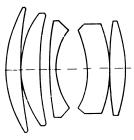 |
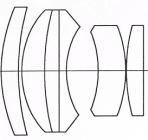 |
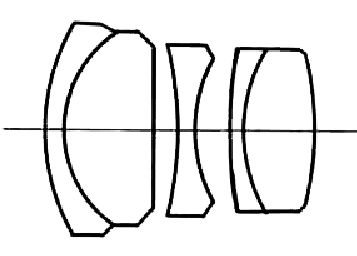 |
| Picture |
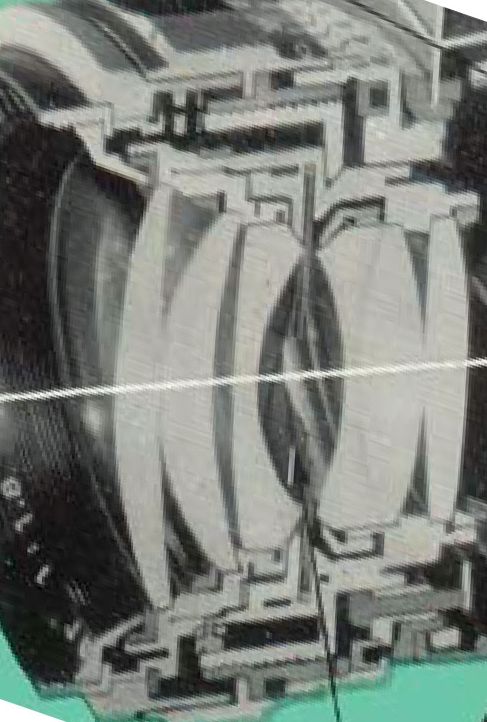 |
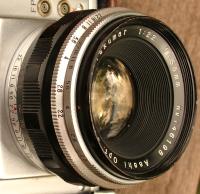 |
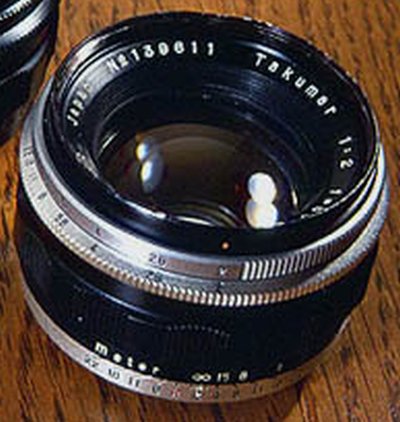 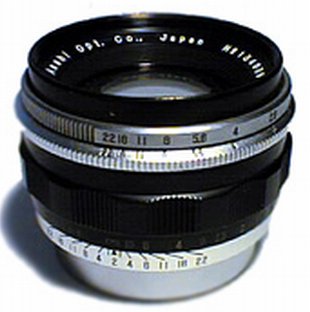 |
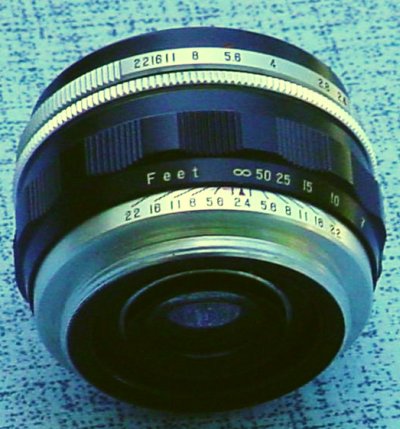 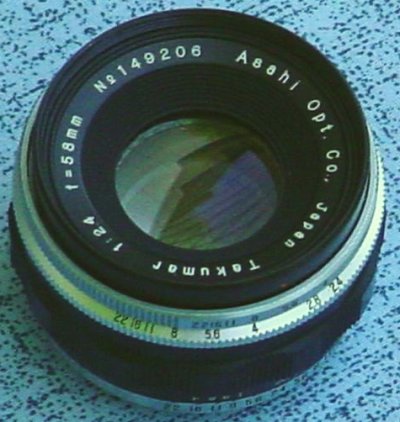 |
| Press Text |
||||
| Remarks |
Highest
speed
lens for Original Pentax/ Pentax S, preset forerunner of the Pentax K "Zebra" Auto-Takumar 1.8/55mm lens, earlier at
production (known S/N 158,87X as opposed to 168,80X) This is the fastest, latest and rarest of the preset standard Takumars. It has the same famous Gaussian (Ultron) 5-6 type becoming the Pentax standard for decades until now. Because it has the same speed and focal length (55/1.8) they are difficult to pick out. |
This
is
one of three (and probably the most common) standard lens for the
Asahi-Pentax (1957) - estimates 8.000-12.000 produced. Interestingly enough, this was the first, and solely Gaussian type in 1957, very similar to later f/1.8-f/2.0-f/2.2 designs - but a simpler design with a single 4th element instead of the cemented pair later lenses possess |
For
black
Original
Pentax black lenses available (rare). G.v.Oosten shows a slightly different diagram in his book, but my lens too has a flat rear element like the one of Kensetsu's camera collection HP This was the second standard lens for the 1957 Asahi Pentax of a complete other family: A Sonnar (cemented triple). The focal length had to be enlarged to 58mm (small rear distance of that type). To my knowledge it is the only SLR Sonnar type standard lens. Rarer than the Asahiflex lens of the same focal length. |
The
same
design type like the M37 lens of same speed and focal length. Remarkably, the third Asahi-Pentax (1957) standard lens was of a third different design concept - a Heliar type (to my knowledge, the only SLR Heliar type standard lens, and the fastest Heliar type of any format) Test: How do these lenses compare in pictures and figures? |
| Occurence |
2 *** |
17 ** |
7 *** |
7 *** |
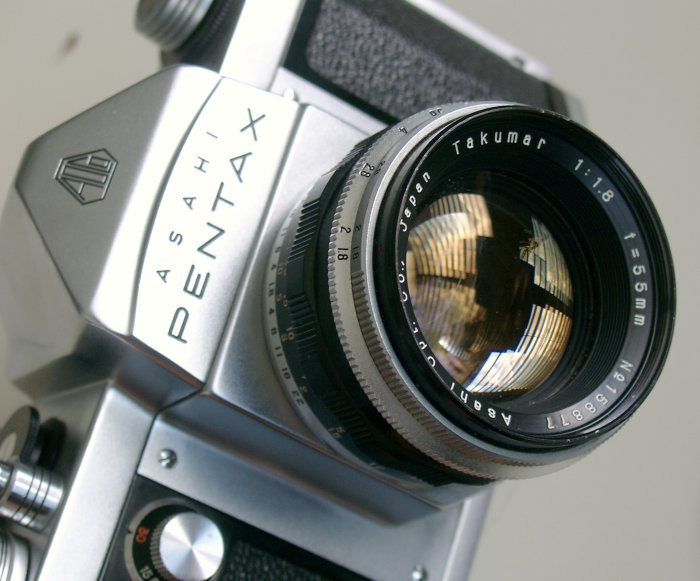
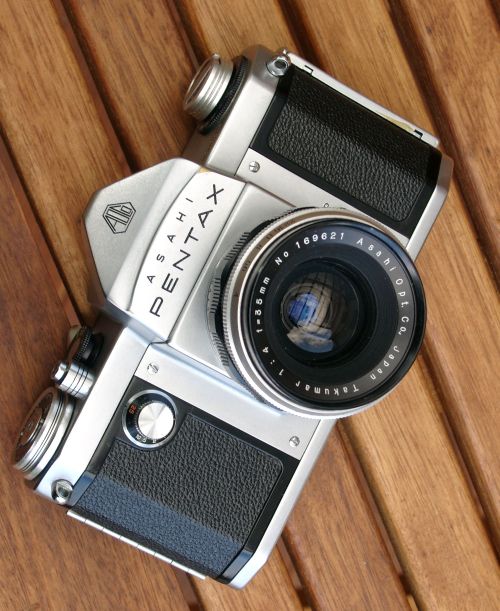
| Type |
Takumar |
Takumar |
Takumar |
Takumar |
Takumar |
Takumar |
| Lens |
35mm f/4 |
83mm
f/1.9 |
100mm
f/3.5 |
105mm
f/2.8 |
135mm
f/3.5 |
200mm
f/3.5 |
| Minimum Aperture (Diaphr. type) |
22 (M) |
22 (P) |
16 (P) |
22 (P) |
22 (P) |
22 (P) |
| Groups-Elements |
4-5 (or 4-4?) |
4-7 |
3-3 |
4-4 |
4-5 |
4-4 |
| Minimum Focussing Distance (m) |
0.45 |
1.1 |
1.1 |
1.2 |
2 |
2.7 |
| Weight (g) |
136 |
305 |
280 |
250 |
300 |
750 |
| Filter Size (mm) |
46 |
49 |
46 |
46 |
46 |
67 |
| Introduced |
1957 |
1957 |
1957? |
1958 |
1957 |
1959 |
| Discontinued |
1959 |
1959 |
1957? |
1961 |
1962 |
1961 |
| Lens Diagram |
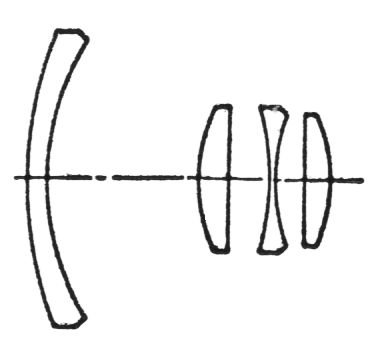 |
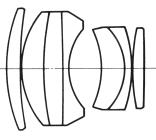 |
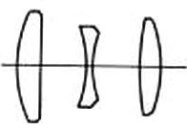 |
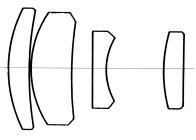 |
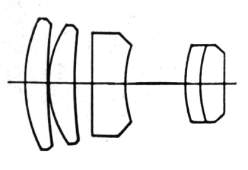 |
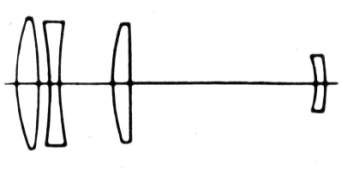 |
| Picture |
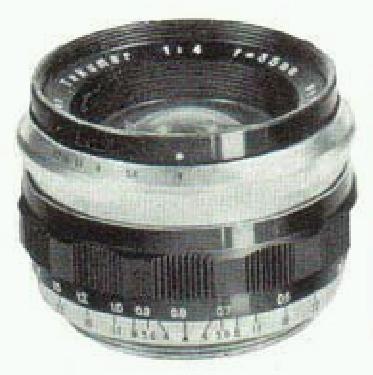 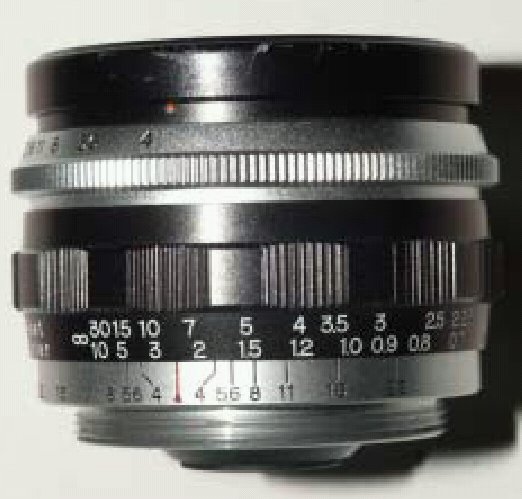 |
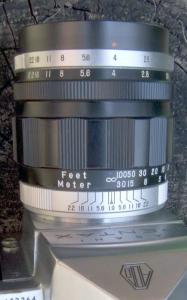 |
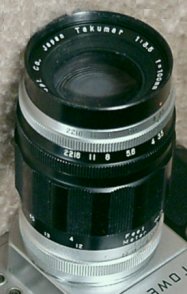 |
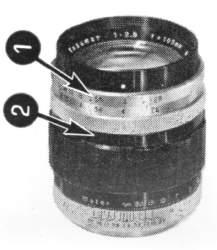 |
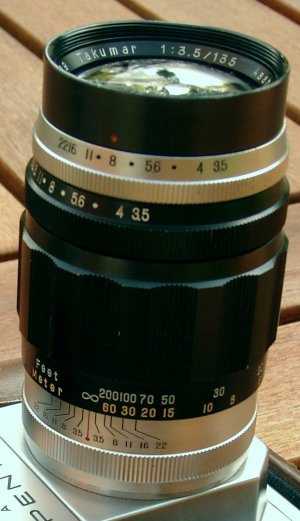 |
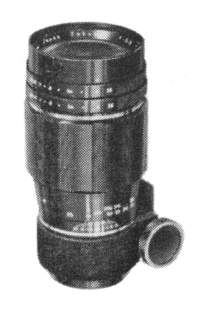 |
| Press Text |
Same size as the standard lens;
can be put into the camera case together with the PENTAX. Light in
weight; easy to use. You do not usually need an aperture brighter than
f4 for general daylight outdoor picture taking. |
Produces a brilliant image in all
corners of the photo even with the diaphragm fully open. Indispensable
for distant subject matter and for portraits. Ideal for close-ups of
animals or plants even at a distance. Recommended as the ideal long
tclephoto lens |
A
bright, 4-element telephoto lens for hand-held shooting. New optical
glass used
with recently advanced theory of design. Ideal for extraordinary
snapshots, stage, spoils and news photos with exceptionally
fascinating telephotographic effects. |
|||
| Remarks |
Reverse
telephoto
of Tessar,
like the later f/3.5 or triplet type - different sources - unknown |
"Never
made
in regular production"
according to G.v.Oosten's book. Obviously, this isn't the case. But quite rare and usually expensive as most fast 85's. Nice "highspeed" portrait lens of small size and weight, Sonnar type like the M37 lens of same speed and focal length Collectors page see here |
Basic
Triotar
design,
lens of the same speed and and focal length as the Asahiflex
lens, but with
newer outline (similar to the 83/1.9) This lens hadn't a great lifespan and soon was replaced by the Auto-Takumar 105/2.8 (1959) so it's considered as rare. |
This
is
a new design which was quite simply developed out of the 3.5/135
lens, reduced by one element. Nevertheless, it's not a bad lens.
performance-wise. It was kept in production until
1963 - then replaced by a version with cemented rear group instead of a
single rear element |
The
same
design like its M37 predecessor. A sharp lens. |
|
| Occurence |
12 ** |
5 *** |
4 *** |
20+8 ** |
55+16 |
32 * |
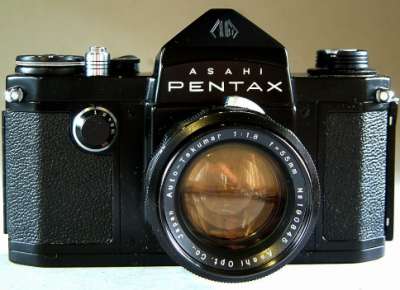
| Lens |
Auto-Takumar |
Auto-Takumar |
Auto-Takumar |
Auto-Takumar |
Auto-Takumar |
| Type |
55mm
f/1.8 |
55mm
f/1.8 |
55mm f/1.9 | 55mm
f/2 |
55mm
f/2.2 |
| Minimum
Aperture
(Diaphr. type) |
22 (S)
|
22 (A)
16? |
22 |
22 (S) |
22 (S) |
| Groups-
Elements |
5-6 |
5-6 |
5-6 |
5-6 |
5-6 |
| Minimum
Focusing
Distance (m) |
0.55 |
0.45 |
0.55 |
0.55 |
0.54 |
| Weight
(g) |
174 |
215 |
175 |
164 |
|
| Filter
Size
(mm) |
46 |
49 |
46 |
46 |
46 |
| Introduced |
1958 |
1960 |
1958? |
1958 |
1961 |
| Discon-
tinued |
1959 |
1962 |
1959 |
1959?
(probaby later) |
1961 |
| Same
lens,
also sold by Sears, Roebuck & Co |
Forerunner
of
the Super-Takumar. The diaphragm ring stops down counterclockwise |
||||
| Lens
Diagram |
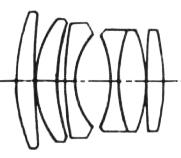 |
All
lenses
here have the same diagram (see left) |
|||
| Picture |
Eye-catching
"zebra-style"
black and chrome focus ring. This was a quite fashionable
style in the late 1950's - early 1960's. Pentax just did it once, with
this lens, which was the highest speed lens for the K ("King") camera. see title picture. Some have marqued half stops on the focussing ring, others don't. |
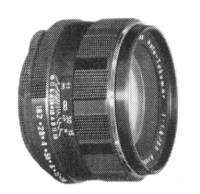 |
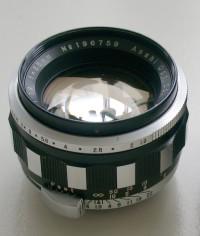 |
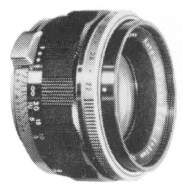
|
|
| Press
Text |
Razor-sharp,
fully corrected, high speed
standard lens, using rare earth glass, designed by lop lens designers. Equipped with fully automatic diaphragm. Ideal for professional results. |
Newest high-speed 6-element lens,
utilizing latest optical gloss advances. High resolving power
coin bines with outstanding brightness for easiest focusing.
Ideal for exceptional results indoors or at night. |
|||
| Remarks |
It
is
very interesting that after "proving" 3 different design families of
standard lenses in the "Pentax year" 1957, one year later only one
remains alive - the "Ultron" type
made of 6 elements in 5 groups. When other optical companies erratically changed standard lens design well into the 1970's, Pentax remains stable with this concept. Even today (2005) this is Pentax standard of this speed and focal length withoout noticeable difference as far as diagrams are examined. Arguments can be made that it was Pentax who sets this as an industry standard design... |
This
is
optically the same design as the 1958 version, but with newer
barrel, shorter close focus distance,
and fully autmatic diaphragm mechanism, and completely black, setting
the
standard "look" for Takumar lenses for more than 20 years. In fact this was the first "Super-Takumar". Slightly bigger and more weight too! From here the 49mm is Pentax standard filter size, instead of the earlier 46mm |
This lens was solely made for the Tower 29 sold by Sears, Roebuck & Co in the USA as a re-badged Pentax
K. It was the only time in history Pentax used a f/1.9 for a standard lens. Today this lens is even harder to find that the Tower 29, which wasn't sold very often. The only known S/N belongs to early 1959 range. The lens is very similar in outline to the Takumar 55/1.8 for the Pentax K, including the Zebra style. In fact, it could be the same lens optically. |
Follower
to
the f/1.8 and f/1.9 "Zebra" style lens, very similar to them, black
focussing ring, and half stops. Very nicely made too. This lens was sold with S2/H2 cameras for standard and still available in good numbers. S/N range from 200,95X - 502,74X |
Very
similar
to the 2.0/55mm
Auto Takumar - for the lower priced series. This was indeed more a
marketing
trick than it reflects the real production costs - which of course are
nearly
as high as for the f/2.0 lens... |
| Occurence |
50 * |
62 * |
1 *** |
109 |
92 |
| Lens |
Auto-Takumar |
Auto-Takumar |
Auto-Takumar |
Auto-Takumar |
Auto-Takumar |
| Type |
35mm
f/2.3 |
35mm
f/3.5 |
85mm
f/1.8 |
105mm
f/2.8 |
135mm
f/3.5 |
| Minimum
Aperture
(Diaphr. type) |
22 (S) |
22 (S) |
16 (S) |
22 (S) |
22 (S) |
| Groups-
Elements |
6-5 |
4-5 |
4-5 |
3-4 ?
I think 4-4 is correct |
? - 5 |
| Minimum
Focusing
Distance (m) |
0.45 |
0.45 |
0.9 |
1.2 |
1.8 |
| Weight
(g) |
310 |
147 |
340 |
280 |
317 |
| Filter
Size
(mm) |
65 |
46 |
55 |
49 |
49 |
| Introduced |
1959 |
1959 |
1960 |
1959 |
1960 |
| Discon-
tinued |
1962 |
1962 |
1962 |
1961 |
1963 |
| Lens
Diagram |
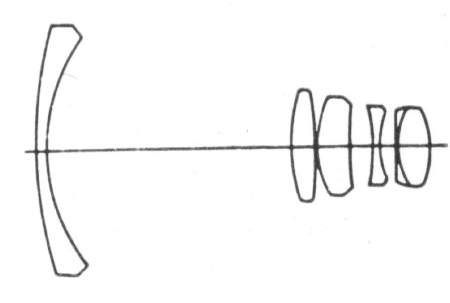 |
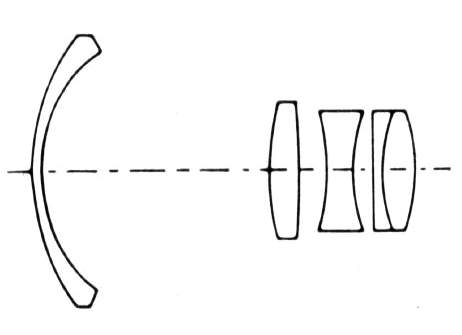 |
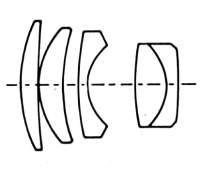 |
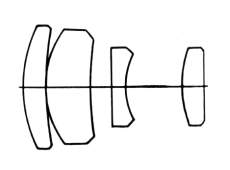 |
 |
| Picture |
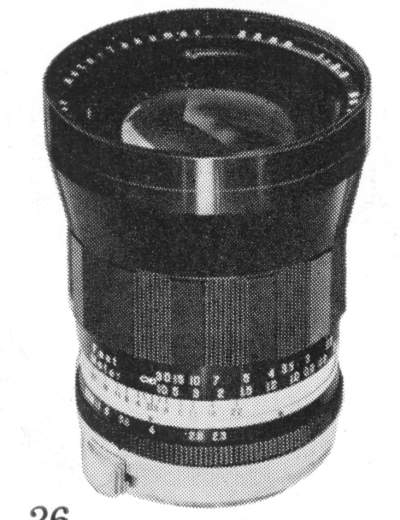 |
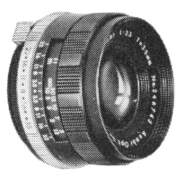 |
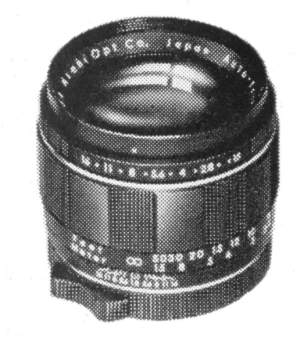 |
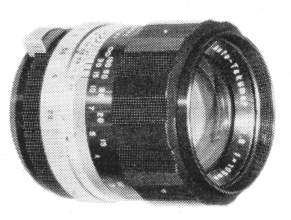 |
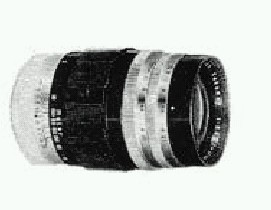 |
| Press
Text |
One of the world's brightest
retrofocus wide angle lenses for single lens reflex cameras.
Edge-to-edge sharp resolution at full aperture; unique lens design
without distortion; suitable for architectural photography. |
A medium speed lens with extremely
high resolving power, this is an excellent general purpose wide-angle
optic which will prove highly useful for scenic, industrial, and
architectul'nl photography. Compact and light in weight. |
A new, ultra-fast 5-element lens
which produces an image slightly larger than the standard lens. Perfect
for available light portraiture, nature studies, and sports coverage.
Used as a standard, general purpose lens by many photographers |
A
quality
medium tclephoto lens of 4 elements, with well corrected
aberrations. Light weight design for portability and easy handling.
Recommend-ed for scenery, portrait, news photos, other moderate
telephoto effects. |
|
| Remarks |
This
was the first "Auto Takumar" non-standard lens, as well as the first
fast SLR wideangle "reporter lens" (marketed Autumn 1958) which gaves
Pentax a clear advantage. It was replaced in 1963 by a Super-Takumar
2.0/35 with even bigger filter! (67mm) and more weight. It's one of the nicest lenses of the early period, well made and not heavyweight. Performance wise it shows significant chromatic aberrations at high aperture (probably because of the great distance of the single front element to the correcting group). Noneetheless an important lens for every Early Pentax collector... |
This
was taken into production one year after the 2.3/35 and, of course,
replaced the older preset 4/35mm lens.This was Pentax megaseller
wideangle lens. It continued in different mountings until 1979
(K-Bayonet) ! Obviously the reason was not its speed. It was a very sharp and contrasty lens, it was very compact, and it was low-priced. This was also the lens which created the typical Pentax "focussing scale window". If the 2.3/35 is a "nice-to-have" lens, this clearly is a "must-have"..! |
A "Auto
Takumar" for real, like the 1.8-55. Front diaphragm and no "focussing
scale window" opposed to later versions. From design point of view, this lens was derivated from the 3.5/135 - a simple solution. High edge sharpness and contrast are not present at f/1.8 - a "portrait lens" characteristic of that vintage. This version was produced to 1964. Between 1964 and 1972 the nominal speed was reduced to f/1.9 Nevertheless, the overall design wasn't so bad that it was replaced not until 1972, by a 6-elements/ 6 groups Double Gauss design 1.8/85mm lens with SMC. |
This
lens
was developed out of the 3.5/135 and kind of shortliving, compared
to its series. Replaced in 1962 by a 5-elements/ 4-groups design
(Super-Takumar series) similar to the to the 135mm with cemented rear
group, but - opposed to it - turned cemented surfaces. The first known example has a 182.xxx S/N. A well made and quite compact short telephoto lens, which was sold in high numbers. A pleasure to use. Attention with backlight shots (flare) ! |
The same design like all its predecessors from 1952 on.
All Pentax short telephoto
lenses until 1967 are derived from this initial design. Kept in production until 1965 (3.5/135 Super Takumar) which has 4 elements in 4 groups (one rear element less). This makes it looks like the earlier 2.8/105 lens. Strangely this two lenses switched optical formulas.´.. |
| Occurence |
20 ** |
40 * |
17 ** |
11 ** |
19 ** |
| Date |
S/N Lens |
S/N Camera |
Remarks |
| May 1957 |
132.000 |
134.000 |
Original Pentax - one model |
| April 1958 |
158.000 |
154.000 |
first 1.8/55 pre-set Takumar/ first K-model |
| Autumn 1958 |
179.800 |
first 2.3/35 Auto-Takumar |
|
| Spring 1959 |
197.800 |
193.000 |
first 2.8/105 Auto-Takumar/ first H2-model |
| Autumn 1959 |
249.600 |
first 3.5/35 Auto-Takumar |
|
| Spring 1960 |
352.300 |
first 1.8/85 Auto-Takumar |
|
| Autumn 1962 |
690.000 |
first 3.5/28 Super-Takumar |
|
| 1963 |
677.000 |
first 2.8/105 Super-Takumar |
|
| 1964 |
766.000 |
first version 1.4/50 |
|
| 1964 |
886.000 |
first 1.9/85 |
|
| 1965 |
1.470000 |
second version 1.4/50mm |
|
| 1967 |
2.200000 |
first 3.5/24mm |
|
| 1968 |
3.430000 |
first 4.5/20mm |
|